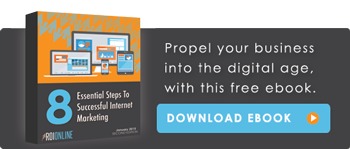5 Tips For Writing Epic Headlines And Blog Titles
Perhaps the hardest part about writing a blog (besides actually writing the blog) is coming up with an epic title that will entice readers to click.
It sounds counter-intuitive that the shortest part of your work is the most challenging, but many times it is.
That’s because so much is riding on your headline. A good title makes or breaks a piece. Your work can be a beautiful smorgasbord of clarity and imagery on the inside but get zero traction because your title falls flat.
In today’s fast-paced world, you need to hook people as quickly as possible. Here are five ways you can write epic headlines and blog titles that people (other than your mom) will actually want to click.
1. Write More Than One Title
It’s always better to over-think things than to under-think them — in marketing, anyway. And since your title is the first thing your readers are going to see, it’s best to overthink it.
So don’t wing it. Come up with between three and five awesome headings and jot them down in a notebook. Physically writing them down helps you see the words in a new perspective. This can help you examine the titles more objectively and determine which one will work best.
As a good rule-of-thumb, the most compelling titles:
- Are easy to understand,
- Make sense for the article,
- Let the reader instantly know what your blog is about,
- And are interesting enough that people want to click on it.
Before you pick your favorite, however, get a second pair of eyes on it. As writers, we can have a hard time judging our work objectively. I mean, you wrote it; of course it’s going to be awesome! But the opinion of someone who hasn’t spent the last five hours writing the copy is typically a bit more reliable than your own.
Share your ideas with a trusted coworker or superior or even that coffee barista that always gets your order right. The more your second opinion fits your buyer persona, the more beneficial their feedback will be.
If nothing else, at least you’ll get to showcase all your hard work, you little overachiever you.
2. Put The Keywords Near The Front
Nothing is worse than writing a beast article and getting no clicks because the most relevant long-tail keywords were at the very end of your title.
Check out this title as an example: “The 6 Ways You Can Benefit From Getting A Water Cooler For Work.” It’s not terrible. I mean, by the end of it, you understand what the article’s going to be about. But that’s the issue. You don’t know until the end.
Your reader shouldn’t have to read 14 words to know what your article or ebook is about. That takes up too much of their time and energy. As StoryBrand founder, best-selling author and marketing guru Donald Miller states, the best marketing is marketing that doesn’t make your customers burn calories.
So what’s this look like in action? Let’s go back to that water cooler title above. A couple of tweaks and we can change it to, “6 Ways A Water Cooler Can Amp Up Your Business [Infographic].”
Bam. Instantly better, right? Readers will know the direction of the blog four words in, saving them time and brainpower. They’ll also be more likely to click on it.

3. Keep It Short
Titles aren’t like sub sandwiches. People actually want them to be shorter.
But how short should your titles be? After all, there is such a thing as too short. You can’t condense your title so much that it doesn’t make sense. And an overly-condensed blog is typically overly vague, which is a problem all on its own.
“How To Cook Better” is a decent short title. But would you click on it? I wouldn’t. I’m not the best cook, but I won’t be wasting my time reading this article. What exactly is it improving? The taste of my cooking? How fast I cook? How much of my food ends up on the plate instead of the floor?
Now, an article titled, “5 Tips To Make Every Recipe Taste Incredible” — that I would read.
OK, let’s talk numbers. According to HubSpot, your titles and headlines should be anywhere between eight and 12 words long. Headings with eight words have a 21 percent higher click-through average, whereas headings with 12 words get the most Twitter shares.
When writing headlines, try not to focus too much on how long your title is. Just make sure it fits your article and intrigues the reader. You can cut words as needed.
4. Give It Personality
What’s the difference between Tina Fey and Kristen Stewart? (Other than a sense of humor, of course.) That’s right! Personality!
Personality is what separates the rookies from the pros, the cookies from the cardboard cut-outs. It’s what assures readers your blog isn’t going to be another stuffy infomercial. And it’s critical to a high click-through rate.
An easy way to give your titles personality is to write them the way people normally speak. This personalizes them, making them feel like they were written by an actual person and not another cog in a giant corporate machine.
Depending on your industry, you can also add in fun words to jazz up your titles. Here are some of my favorites:
- Explosive
- Dynamic
- Annihilate
- Ultimate
On second thought, maybe I watch too many action movies…
But if we look at these in action, you’ll see what I’m getting at. “How To Create Explosive Logos,” “The Ultimate Guide To Dynamic Writing,” “12 Easy Tips To Annihilate Procrastination.”
Maybe Michael Bay is onto something. Explosive wording can take your titles to the next level – if you’re in the right industry, that is. Those in more serious industries, like fire prevention or morticians, should probably stick to the drier wording.
5. Don’t Forget About SEO
If you’re blogging, you probably know about SEO. If you don’t, you should probably look into it as of yesterday. SEO is an important aspect of modern marketing. However, it SHOULDN’T control your content, but it’s important to keep it in mind, particularly when writing headlines.
In order for your blog to show up on search engines, the title has to contain the same long-tail keywords that people are searching for. Finding these keywords may take a bit of detective work – and by detective work, I mean spending several hours using Google Adwords and Moz Keyword Search to hunt down the right phrasing.
But all that extra work is well worth it. Post titles that include relevant long-tail keywords rank higher than those that don’t. This could mean the difference between getting three views or three hundred.
Headlines and titles may be a pain, but they’re essential to getting clicks. Follow these five tips to create epic headlines that people will actually want to click on. If only dating were this easy.
Get more tips for awesome internet marketing. Download our FREE ebook and become a digital marketing pro!






